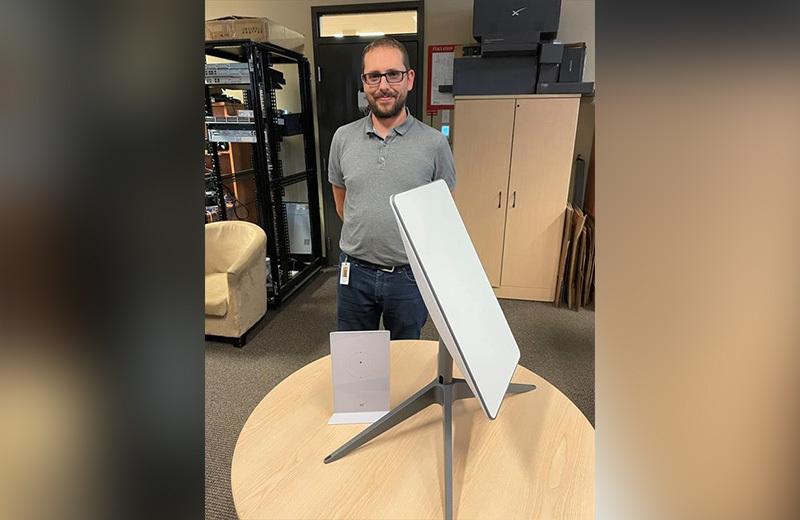By the end of 2023, Northern Health Information Technology (IT) is working to have Starlink added to all Northern Health acute care sites. Starlink is the “world's first and largest satellite constellation using a low Earth orbit” to deliver high-speed, low-latency internet to users all over the world (Starlink, 2023).
Installing this technology will help “reduce risk by improving the resiliency of our network to make sure services stay available in the event of wildfire or other disaster,” says James Uhrich, Director of Technology and Information Security.
There is a high risk to loss of network and telecommunications services along Highway 16 west of Prince George, as most communities along this route get their telecommunications services, such as internet, landline phone, and cellular services via a single source of TELUS infrastructure. Starlink adds a second path of connectivity using satellite technology.
No small feat
The project to deploy this technology is a big endeavor. A team of Northern Health network analysts are working with a contractor for the on-site installation. Starting July 11, a group of Northern Health IT staff (from the network, application and project management teams) worked remotely late into the night for 10 nights to implement the service and stay ahead of the wildfire risk in that area. At the same time, a team of two or three travelled to each community, with the rest of the team meeting virtually to complete the installation.
“The team would install, verify the installation, and confirm with the site leaders that everything worked before moving on to the next site. The process was not without its hiccups, we had to go back to one site, but overall, it was successful,” says James.
Intuitive technology
In addition to Starlink, the project team is also adding SD-wan (software-defined wide area network) technology. This provides the intelligence that decides which path will be used to get users connected to their applications or data in the quickest possible manner. Generally, Starlink is a backup network, but the SD-wan allows the network to choose which path is used, based on the best performance. Sometimes Starlink will outperform the current network, so the network will use the faster path of connection.
Currently, Starlink has been implemented in Vanderhoof, Fort St. James, Fraser Lake, Burns Lake, Hazelton, Kitimat, Terrace, Prince Rupert, and Houston. The next communities for implementation are on Haida Gwaii and then the project team will expand from there.
The previous backup technology used geosynchronous orbit satellites, which are an older technology that uses a receiver dish which sits on top of the hospital but is a slow technology. This is a very limited service that would only allow for a computer and some phone calls.
Starlink satellites sit much lower in the sky and so the connectivity time is much quicker and the impact to the users is almost negligent. The technology speed is similar to a wired connection speed and high-speed internet services.
Thanks to the hard work of our IT staff at Northern Health, our communities are becoming more prepared for network outages.














Comments